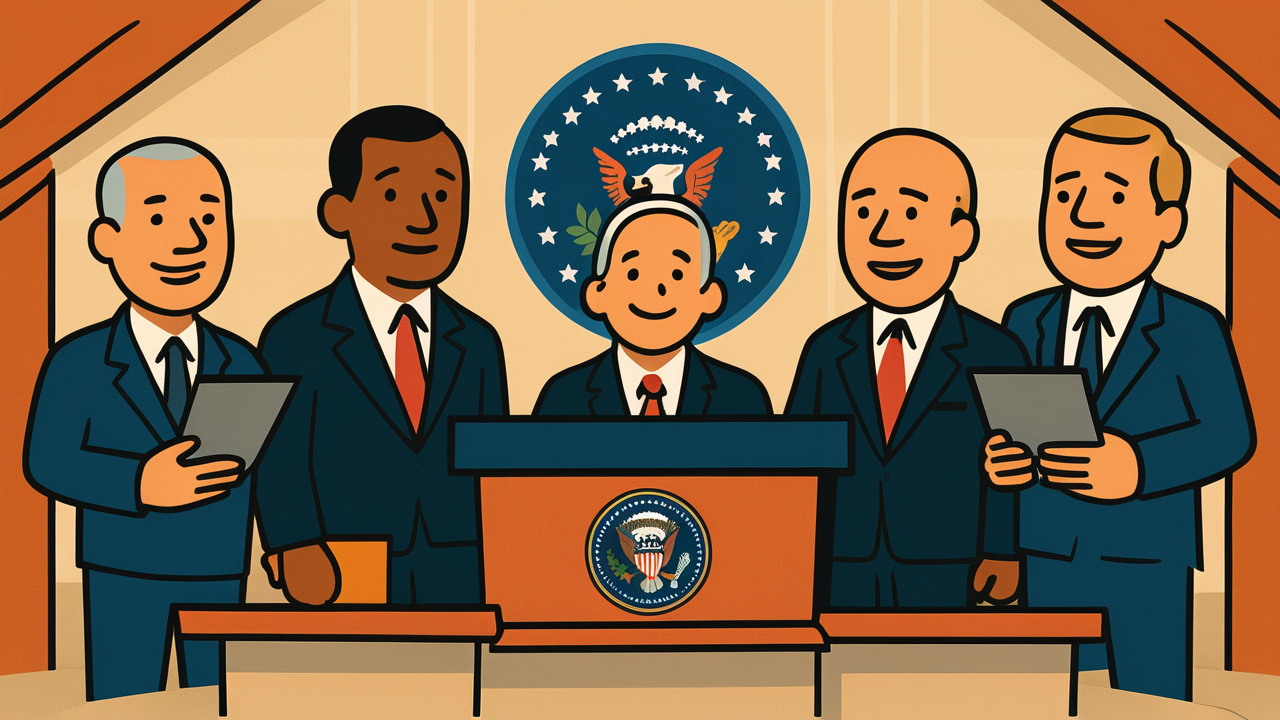[Disclaimer] This article is reconstructed based on information from external sources. Please verify the original source before referring to this content.
News Summary
The following content was published online. A translated summary is presented below. See the source for details.
Presidential administrations traditionally mark certain milestones to assess and communicate their progress. The six-month mark represents a significant checkpoint when new administrations have typically passed initial legislation, made key appointments, and established policy directions. These assessments serve multiple purposes: rallying political supporters, communicating with citizens, and setting agendas for upcoming priorities. Understanding how to evaluate these milestone reports requires examining multiple perspectives, checking independent sources, and distinguishing between different types of achievements – from executive orders that can be quickly implemented to complex legislation requiring congressional approval. Citizens benefit from understanding these political communication strategies to make informed judgments about governmental performance.
Source: White House News
Our Commentary
Background and Context

Presidential milestones like the first 100 days or six months in office are traditions dating back decades. These timeframes aren’t in the Constitution – they’re political customs that help measure early performance and set expectations.
The six-month mark is particularly significant because it’s enough time for substantive action but still within the “honeymoon period” when public support is typically highest. By this point, administrations have usually filled key positions, outlined major policies, and begun implementing campaign promises.
Understanding these milestones helps students learn how democratic governments operate and communicate with citizens. It’s like a progress report for the country’s leadership.
Expert Analysis
Evaluating six-month achievements requires understanding different types of governmental actions. Executive orders can be signed immediately but may face legal challenges. Legislation requires congressional approval and takes longer. Administrative changes happen through agencies and vary in speed.
Political scientists identify several categories for evaluation:
– **Policy Implementation**: New programs or changes to existing ones
– **Personnel**: Key appointments to courts, agencies, and advisory positions
– **Legislative Achievement**: Bills passed through Congress
– **Foreign Policy**: Treaties, agreements, and international relationships
– **Economic Indicators**: Employment, GDP, stock market performance
Remember that correlation doesn’t equal causation – economic changes at six months often reflect previous policies more than new ones.
Additional Data and Fact Reinforcement
Historical context provides perspective. Franklin Roosevelt’s first 100 days in 1933 set the standard with 15 major laws during the Great Depression. Modern presidents face different challenges with 24/7 media coverage and political polarization.
Research shows that presidents typically achieve more in their first year than any subsequent year, making early milestones crucial for major initiatives. About 70% of significant legislation passes in a president’s first two years.
Young citizens increasingly engage with these milestones through social media, making media literacy essential for separating facts from spin across all political perspectives.
Related News
Presidential milestone reporting has evolved with technology. While FDR used radio “fireside chats,” modern presidents use Twitter, Instagram, and TikTok. This direct communication bypasses traditional media but requires citizens to be more discerning about information sources.
Opposition parties always provide counter-narratives to milestone reports, offering different interpretations of the same events. This democratic debate is healthy but requires citizens to think critically.
Summary

Understanding presidential milestones empowers young citizens to engage meaningfully with democracy beyond partisan talking points. Whether evaluating current leaders or studying history, recognizing how administrations mark progress – and how to assess their claims – builds critical thinking skills essential for civic participation. The six-month mark offers a snapshot, not a final grade. Informed citizens look at multiple sources, consider various perspectives, and understand that democratic governance is an ongoing process requiring continuous engagement.
Frequently Asked Questions
Why do presidents emphasize these specific timeframes? These milestones create media moments to showcase achievements and reset narratives. They also pressure Congress to act quickly on presidential priorities.
How can students fact-check milestone claims? Use nonpartisan sources like FactCheck.org, check government databases for statistics, read multiple news sources with different perspectives, and look for specific, measurable claims rather than vague statements.
Do these milestones matter for future elections? Early achievements can build political momentum, but voters’ decisions usually depend more on conditions closer to elections. However, major early successes or failures can shape public perception long-term.


